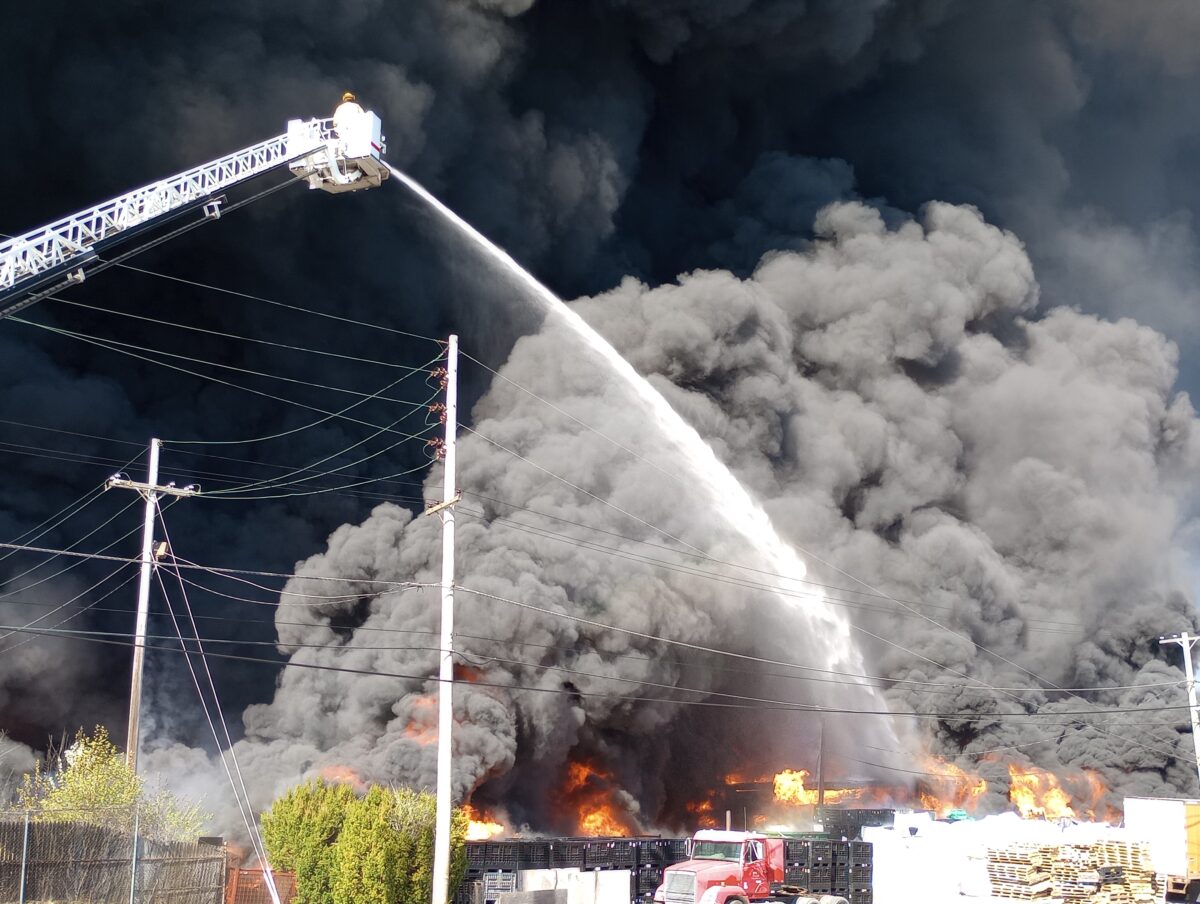The thick, black smoke from the April 11 plastics fire in Richmond looked ominous, and it definitely carried toxic material from the burning plastic.
There were many unknowns about the air quality at the time; however, constant Environmental Protection Agency testing for more than a week has left health officials confident the burning plastics won’t cause residents long-term problems.
“I think any exposures were very low levels and were not at a long enough duration that you would see long-term health effects,” said Christine Stinson, executive director of the Wayne County Health Department, following the April 20 Wayne County Health Board meeting.
Dr. David Jetmore, the county’s health officer, told the board that benzene, butadiene and naphthalene were the main contaminants EPA testing identified, in addition to the expected particulate matter. Stinson said benzene and butadiene are regularly found in urban areas because of gasoline-powered vehicles and equipment.
“The levels that we saw were chronic levels, which means you needed to be exposed to these at this level for a very long time,” Stinson said.
The EPA results also showed carbon monoxide, chlorine and hydrogen cyanide were detected at points during the nine days of testing, which stopped April 19 when no contaminants had been detected for three days. The detections generally occurred within the half-mile evacuation area or at the fire site. Stinson said tests away from that site did not detect contaminants or detected far less than the chronic level.
“I think it’s important for people to understand where we were picking up (readings) were right around the fire,” Stinson said. “We would do plume grabs and then we had monitors on the site or just at the fence line at the site, and that’s where we were picking up those levels. As you got farther away from the fire, those levels came down drastically.”
Residents in the plume might have experienced symptoms such as irritated eyes, trouble breathing, headaches and nausea, and issues such as age, asthma or COPD impact effects on individuals. The variety of risk factors and unknown contamination levels April 11 led to the evacuation and shelter orders to keep residents out of the smoke plume.
When the controlled fire stopped expelling additional contaminants and detection was low away from the fire site, the evacuation and shelter-in-place orders were rescinded April 16.
Richmond Fire Department Chief Tim Brown said Friday that flare-ups continued to occur, but the department no longer was monitoring the site 24 hours a day. He said hot rubble is insulated by other rubble and when wind changes or the rubble is otherwise disturbed, oxygen reaches the hot spots to cause flare-ups.
Deputy Chief Doug Gardner, the department’s investigator, has been able to access the site and is now viewing video of the site and interviewing witnesses. Brown said Gardner remains in contact with the Indiana State Fire Marshal. That office has requested former or recent employees of Cornerstone Trading Group, the plastic recycling and resale business that occupied the 13.8 acres that burned, contact Investigator Ross Keasling at 317-509-0381 or rkeasling@dhs.in.gov.
Residents returning to their homes were advised to clean high-touch surfaces and any surfaces showing visible ash or soot with mild dish soap and water. Wet-wiping surfaces prevents any ash or particulate matter from stirring. N95 masks provide additional protection against matter that might be disturbed during cleaning.
Stinson said air testing was conducted inside a building adjacent to the fire site that had its HVAC system off and windows closed and no contaminants were found. She also doubted anything in fire smoke would contaminate the ground, but recommended that any gardeners worried about their soil could remove the top 2 or 3 inches and replace that with clean soil.
Fire debris should be reported to the EPA for collection by contractors. Testing of debris did show the presence of asbestos, so all debris is being treated as if it contains asbestos. The contractors prioritized schools, day cares and parks to begin debris collection.
Information about EPA testing results, cleaning and reporting debris is available from the fire page on the city’s website, richmondindiana.gov. The health department also continues to provide an information hotline at 765-973-9300.
The EPA also planned to meet with residents of Richmond and Ohio areas impacted by the smoke plume for four hours April 25 at Fairview Elementary School.
A version of this article appeared in the April 26 2023 print edition of the Western Wayne News.

